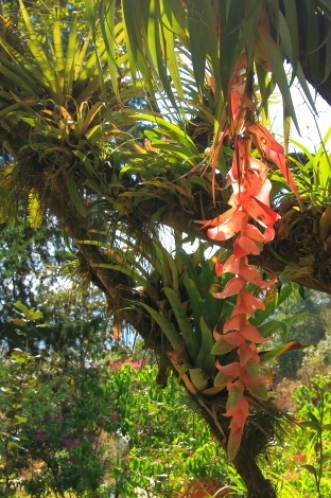
This 16th century building with solid adobe walls is located in the center of town and is an important symbol of San Cristobal
The department of tourism in Mexico defines a Pueblo Magico as a place of natural beauty, cultural riches or historical revelance. In 1987 San Cristobal de las Casas was selected as a magic town and is considered to be the Pueblo Magico of Pueblo Magico’s. It is centrally located in the state of Chiapas at 2300 meters above sea level and lies in fertile valley surrounded by mountains and pine forest.. It is also a place where old traditions and customs coexist with modern luxuries. A few of the cities highlights include 12 musuems, 2 theaters, 15 temples, 4 cultural centers, 6 ecological sites and 3 pedestrian only streets lined with a variety of cafes, restaurants, bars and retail stores. San Cristobal is also an ideal location to start exploring the natural wonders in the state of Chiapas such as Montebello Lakes, Agua Azul waterfalls, Rancho Nuevo Caves, Sumidero Canyon, Palenque National Park and many other ecological attractions not far away. The photo gallery below shows a few of the cities many highlights.

Neoclassical architecture located in the main square of San Cristobal

One of several pedestrian only streets in the center of town lined with a variety of cafes, restaurants, bars and retail vendors

surrounded by the del Carmen Church and cultural center, the arch was built in 1677

At the center of the town square, this gazebo has a restaurant inside and almost always has a live band on top during the early evening hours

Another pedestrian only street with vendors peddling their wares at very reasonable prices

A theater in the centro area with maya warrior guarding the entrance

Another pedestrian only street with a burger king on the corner. It is one of two fast food restaurants in town. Subway is the other.

An ecological reserve in San Cristobal with a hiking path, orchid greenhouse, and variety of flora such as cactus, bromeliads and ferns.

a cultural center for the arts

These pedestrian streets have lots of sidewalk cafes

playing music during a recent local festival

One of 16 temples in San Cristobal next to the ambar museum

Amber is mined in this area and the museum has video’s and exhibits about the origins, mining, and processing of amber

Sits high on top of a mountain overlooking the city.

Templo Mexicano

nineteenth century neoclassical building gothic and baroque features





































